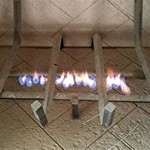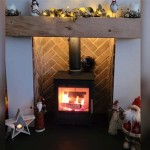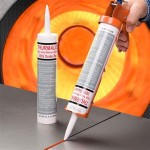Wood Burning Fireplace Insert Sizes: A Comprehensive Guide
Selecting the appropriate size for a wood burning fireplace insert is crucial for optimal performance, efficiency, and safety. A fireplace insert is essentially a self-contained firebox that fits inside an existing masonry fireplace. It significantly enhances heating capabilities and reduces heat loss compared to traditional open fireplaces. Understanding the factors influencing insert size is essential for a successful installation and enjoyable heating experience.
The dimensions of the existing fireplace opening dictate the maximum size of the insert that can be accommodated. However, choosing the largest possible insert is not always the best approach. Overly large inserts might generate excessive heat, making the room uncomfortable, while undersized inserts may fail to adequately heat the intended space. A careful evaluation of the fireplace dimensions, heating needs, and manufacturer specifications is therefore paramount.
This article will guide you through the key considerations for determining the appropriate size of a wood burning fireplace insert for your home.
Key Point 1: Measuring Your Fireplace Opening
Accurate measurements of the existing fireplace opening are the foundation for selecting the correct insert size. These measurements typically include the width, height, and depth of the firebox. It’s crucial to measure the narrowest points within the firebox opening, as irregularities in construction can affect clearance. Pay close attention to any protruding bricks or uneven surfaces that might impede insert installation.
The width measurement should be taken across the front of the firebox, from one side to the other at the widest point and the narrowest point. The height measurement is taken from the floor of the firebox to the lowest point of the lintel or the top of the firebox opening. The depth is measured from the front of the firebox to the back wall. These measurements should be recorded accurately and used as reference points when comparing them to the dimensions of potential fireplace inserts.
It is important to account for any irregularities in the firebox shape. If the firebox is not perfectly rectangular, it might be necessary to create a template or use a measuring tool that can accommodate irregular shapes. This ensures a more accurate representation of the available space and helps avoid selecting an insert that is too large or too small. Consider taking multiple measurements at different points and documenting the variations.
Furthermore, consider the firebox's shape. While rectangular openings are most common, some fireplaces feature arched or tapered openings. These shapes can complicate the measurement process and may necessitate the use of specialized measuring techniques or tools. Consultation with a professional installer is advisable in such cases to ensure accurate assessment and appropriate insert selection.
Finally, consider the flue size. While the insert will have its own flue connection, ensuring that the existing chimney flue is adequately sized is important for safe and efficient venting. A professional inspection of the chimney is recommended to verify its condition and suitability for use with a wood burning insert.
Key Point 2: Understanding Insert Size Specifications
Wood burning fireplace insert manufacturers provide detailed specifications for their products, including the overall dimensions of the insert as well as the minimum fireplace opening size required for installation. These specifications are essential for determining whether a particular insert is compatible with your existing fireplace. Understanding how these specifications are presented and interpreted is crucial for making an informed decision.
Insert dimensions are typically expressed as width, height, and depth. These dimensions represent the overall size of the insert unit, including any protruding components such as handles or trim. Be certain to compare these dimensions to the internal measurements of your fireplace opening, ensuring that there is adequate clearance for installation and operation. Insufficient clearance can lead to difficulties during installation and may compromise the performance of the insert.
Manufacturers also specify the minimum fireplace opening dimensions required for each insert model. These dimensions represent the smallest firebox opening that can accommodate the insert. It is imperative that your fireplace opening meets or exceeds these minimum requirements. Failure to do so will likely result in an inability to install the insert. Attempting to force an oversized insert into a smaller opening can damage the insert and the fireplace structure, potentially creating a hazardous situation.
Beyond the minimum opening dimensions, manufacturers also often provide recommended clearances to combustible materials. These clearances specify the minimum distance that must be maintained between the insert and any nearby walls, ceilings, or other flammable materials. Adhering to these clearance requirements is essential for preventing fires and ensuring the safe operation of the insert. Consider the overall layout of your room and the proximity of combustible materials when evaluating insert options.
The heating capacity of an insert, measured in BTUs (British Thermal Units), is a critical factor in determining the appropriate size for your needs. The BTU rating indicates the amount of heat the insert can generate per hour. To select an insert with an adequate BTU rating, consider the size of the area you intend to heat, the climate in your region, and the insulation levels in your home. A larger area or a colder climate will necessitate an insert with a higher BTU rating. An inappropriately sized insert will be inefficient.
Key Point 3: Factors Beyond Fireplace Dimensions
While the dimensions of the fireplace opening are a primary consideration, several other factors play a significant role in determining the ideal wood burning fireplace insert size. These factors include the heating requirements of the space, the desired burn time, and the overall efficiency of the insert.
The heating requirements of the room or space to be heated should be carefully assessed. This involves considering the square footage of the area, the insulation levels in the walls and ceiling, the number and size of windows, and the climate in your geographic region. A larger, poorly insulated space will require a more powerful insert with a higher BTU output than a smaller, well-insulated space. Estimating the heating load accurately is crucial for selecting an insert that can effectively maintain a comfortable temperature during cold weather.
The desired burn time, or the length of time the insert can burn continuously without requiring refueling, is another important consideration. Larger inserts typically have larger fireboxes, which can accommodate more wood and provide longer burn times. If you prefer to load the insert less frequently, particularly during overnight hours, a larger insert might be a more suitable choice. However, it's important to balance desired burn time with the overall size and cost of the insert.
The efficiency of the insert is also a key factor. Efficiency refers to the percentage of heat generated by the burning wood that is actually transferred into the room, rather than being lost up the chimney. More efficient inserts will typically require less wood to produce the same amount of heat, resulting in lower fuel costs and reduced emissions. Look for inserts with high efficiency ratings, often expressed as a percentage, when comparing different models.
Also consider the style and aesthetics of the insert. While function is paramount, the visual appearance of the insert should complement the existing décor of your home. Fireplace inserts are available in a variety of styles, finishes, and door designs. Choose an insert that not only meets your heating needs but also enhances the overall aesthetic appeal of your living space.
Finally, consulting with a qualified installer or hearth professional is highly recommended. These professionals have the expertise to assess your specific needs and recommend the optimal insert size and model for your home. They can also provide valuable guidance on installation requirements, safety regulations, and maintenance procedures. Engaging a professional ensures a safe and efficient installation, maximizing the performance and longevity of your wood burning fireplace insert.

Fireplace Inserts Explained Typical Sizing Functionality More

Lopi Small Flush Hybrid Fyre Tm Wood Insert Hearth And Home Distributors Of Utah Llc

The Proper Way To Measure Dimensions Of A Fireplace

Super Insert Le Pacific Energy

Wood Burning Fireplace Inserts 1 Stove Insert Dealer

Fireplace Insert Guide Fireplaces Direct Learning Center

36 Elite Made In America Fireplace Xtrordinair

Fireplace Inserts Explained Typical Sizing Functionality More

How To Select A Fireplace Insert The Home Depot

A Step By Guide To Understanding Fireplace Inserts








